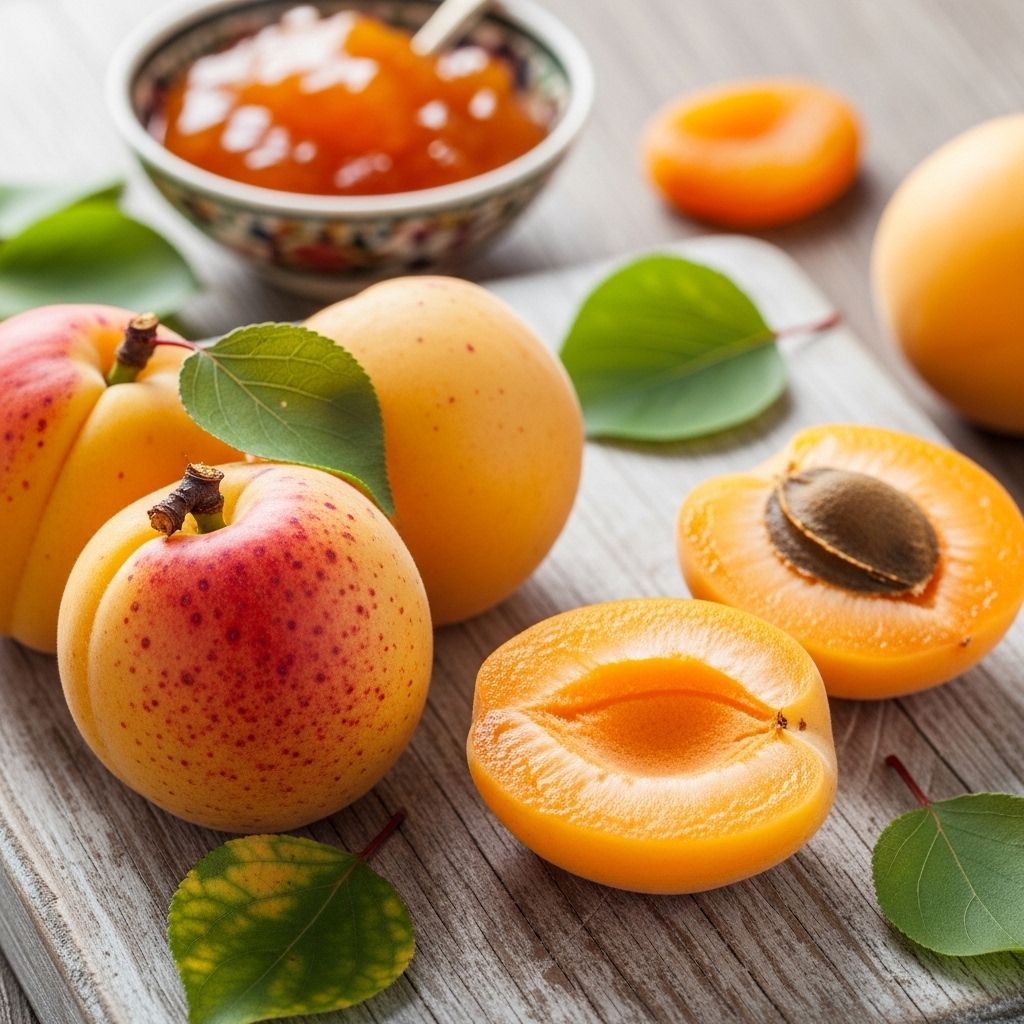What Is Apricot? Benefits, Uses, and Taste
Exploring the Nutritional Value and Culinary Delights of Apricots

Introduction to Apricots
Apricots, scientifically known as *Prunus armeniaca*, are small, pitted fruits with a fuzzy skin, similar in appearance to peaches. Native to China and Siberia, apricots have been cultivated for centuries and are now grown in many parts of the world, including the United States, Turkey, and Armenia, where they are the national fruit.
Physical Characteristics and Taste
Apricots range in color from pale orange to deep saffron, often with a tinge of pink or red blush. They are typically about the size of a golf ball. The taste of apricots can vary significantly depending on the variety, with some being sweet and juicy, while others are tart and firm.
Seasonality and Ripening Process
Apricot season usually spans from late spring to early summer, with specific varieties ripening between late May and late August. The ripening process involves the conversion of starches into sugars, making the fruit sweeter and softer as it ripens.
Benefits of Apricots
Apricots are rich in nutrients, including vitamins A and C, potassium, and fiber, making them a healthy addition to a balanced diet. They are also known for their antioxidant properties, which can help protect against cell damage and support overall health.
Nutritional Benefits
- Rich in Vitamins and Minerals: Apricots are a good source of vitamins A and C, potassium, and magnesium.
- Antioxidant Properties: They contain antioxidants that help protect against oxidative stress and inflammation in the body.
- Fiber Content: Apricots are high in dietary fiber, which supports healthy digestion and bowel function.
Health Benefits
Regular consumption of apricots can contribute to improved eye health due to their high content of vitamin A, enhance immune function, and support healthy skin and hair growth.
Culinary Uses of Apricots
Apricots are versatile fruits that can be enjoyed fresh, dried, canned, or used in jams and preserves. They are also a popular ingredient in baked goods and desserts.
Preparation Methods
- Fresh Apricots: Enjoy them as a snack or add them to salads and desserts for a burst of flavor and nutrition.
- Dried Apricots: Often used in baking and as a snack, dried apricots are a convenient and healthy option when fresh apricots are not available.
- Canned and Preserved Apricots: These are great for cooking and can be used in a variety of recipes, from savory dishes to sweet desserts.
Hybrid Varieties
Apricots are often crossed with plums to create hybrid fruits like apriums and plumcots, which offer a longer shelf life and extended seasonality.
Apricot Production and Cultivation
Apricot trees thrive in areas with a specific climate, requiring a hard winter freeze followed by a warm spring. They are drought-resistant but sensitive to late frosts, which can damage the crop.
Cultivation Challenges
Apricot trees are susceptible to pests and diseases, making organic farming challenging. Integrated Pest Management (IPM) methods are often employed to minimize chemical use.
Frequently Asked Questions (FAQs)
Q: What do ripe apricots look like?
Ripe apricots typically have a vibrant golden-yellow to deep orange color, with a smooth skin and a slightly soft texture.
Q: How do you store apricots to keep them fresh?
To keep apricots fresh, store them at room temperature until they are ripe. Once ripe, they can be refrigerated to prolong their freshness.
Q: Can apricots ripen after being picked?
Yes, apricots will become softer after picking, but they won’t increase in flavor. To ripen them, place them in a paper bag at room temperature.
Q: Are apricot kernels edible?
Raw apricot kernels contain amygdalin, which can be toxic. However, they are sometimes used in cooking for their distinct flavor after being processed to remove the toxic compound.
Conclusion
Apricots are not only a delicious addition to meals but also offer numerous health benefits and culinary uses. Their versatility and nutritional value make them a fruit worth exploring further, whether it’s for their fresh taste or their many uses in cooking and baking.
References
- https://www.foodforestnursery.com/growing-guides/fruit-trees/apricot-tree-growing-guide/apricot-ripening-chart/
- https://foodprint.org/real-food/apricots/
- http://www.hort.cornell.edu/4hplants/Fruits/Apricot.html
- https://thegreenurbanlunchbox.com/apricot-fruit-guide/
- https://www.frankpmatthews.com/advice/plumcot-pluots-and-aprium-hybrid-fruit-a-comprehensive-guide/
- https://everglades.farm/blogs/news/the-complete-guide-to-growing-apricots
- https://ucanr.edu/site/uc-marin-master-gardeners/documents/apricot
Read full bio of Sneha Tete












